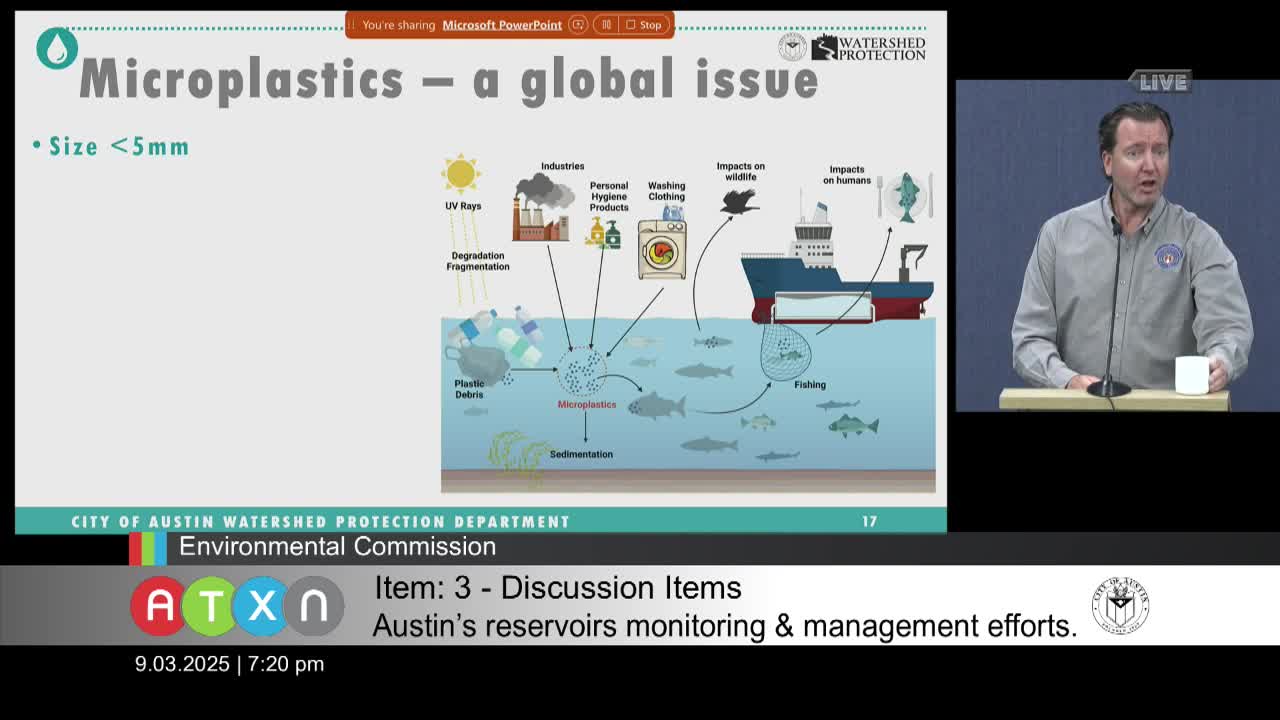University of Texas Research Highlights Microplastic Contamination in Lake Austin and Lady Bird Lake
September 03, 2025 | Austin, Travis County, Texas
Thanks to Scribe from Workplace AI , all articles about Texas are free for you to enjoy throughout 2025!

This article was created by AI using a video recording of the meeting. It summarizes the key points discussed, but for full details and context, please refer to the video of the full meeting. Link to Full Meeting
Microplastics, defined as plastic particles smaller than five millimeters, have become a critical environmental concern. The commission's discussions revealed that these particles are not only widespread but also capable of carrying harmful contaminants, including viruses and toxic chemicals like PFOS and PFAS. This raises questions about their potential effects on the food chain, as microplastics can be ingested by aquatic organisms and bioaccumulate, ultimately affecting larger predators, including humans.
The research presented during the meeting included sediment samples collected from various locations around Lake Austin, analyzed by students from the University of Texas. These samples revealed a concerning trend: as the samples were taken closer to urban areas, the concentration of microplastics increased significantly. This correlation suggests that urban runoff, particularly from roadways, is a major contributor to the pollution of local water bodies.
The commission also discussed the historical context of microplastics, linking their rise to human activity since the industrial revolution. The term "Anthropocene" was used to describe this epoch characterized by significant human impact on the planet, emphasizing the urgency of addressing environmental issues like plastic pollution.
In addition to microplastics, the meeting touched on the steps taken to mitigate plastic pollution, such as the removal of microbeads from personal care products. However, the ongoing presence of manufactured microplastics, like nurdles, and the breakdown of larger plastics into micro-sized particles remain significant challenges.
As the commission continues to explore solutions, the findings underscore the need for increased awareness and action regarding plastic pollution in Austin's waterways. The discussions at this meeting serve as a reminder of the interconnectedness of urban development, environmental health, and community well-being, highlighting the importance of proactive measures to protect local ecosystems. The commission plans to further investigate these issues and engage the community in efforts to reduce plastic waste and its impact on the environment.
Converted from Austin - Environmental Commission meeting on September 03, 2025
Link to Full Meeting
Comments
View full meeting
This article is based on a recent meeting—watch the full video and explore the complete transcript for deeper insights into the discussion.
View full meeting
